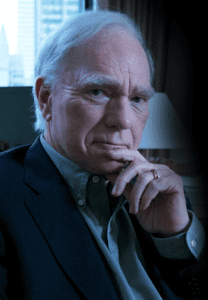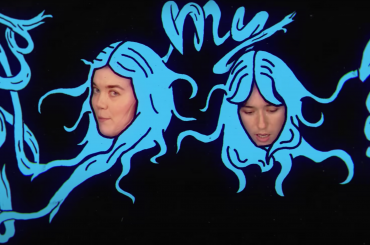Robert McKee has been teaching storytelling since the early 1980s (among his 100,000 former students are a boatload of Academy- and Emmy-Award winning writers and directors), and a few years ago he began offering these lessons to marketing execs, brand managers and entrepreneurs.
The idea? That story design, done with a degree of competence, whether for a novel, short story, film — or business pitch, brand story or power point presentation — appeals to the way our minds work.

In other words, what works for Hollywood can work for your DJ business, whether you’re just starting or beginning to scale up to a multi-op.
At his recent “Story in Business” seminar at Hunter College in New York City, McKee, a salty-tongued, bushy-browed, self-described angry intellectual, spent the better part of nine hours explaining the form of a “purpose-told story.”
He began the lecture, which featured plenty of gesticulating and harrumphing, by dismissing anyone who chose to describe a brand story as a “narrative.”
“If you’re a business owner or you’re running a brand, you need a story,” he says. “It’s not a narrative. It’s a story.”
To find your own brand story, one that you can include on your website or in your social media profiles, use the following guidelines:
Start with the end
1. Define your target audience: Are you describing the benefits of your product to the end-user? Or are you communicating to colleagues or partners? Is your story outward facing, or internal to your company?
For DJs, your target is likely brides, mitzvah moms, corporate event bookers, perhaps venues.
2. Define the problem your target audience faces.
“What is their desire line,” says McKee, co-opting a Hollywood film-writing trope. “Do they want to fall in love? Do they want to look better, feel better? Do they want to win a promotion? Do they want to earn return on their investment?”
What is a bride’s desire line? Usually to have a day and night that she’ll remember forever — or is it?
3. Define the target audience’s action. Do you want them to make a purchase? Do you want them to book a consultation? Do you want them to refer you?
“You can’t build a story about your brand or business if you don’t know what you want the target audience to do,” says McKee.
4. Once you’ve defined the target audience’s desire line and the action you want them to take, go back to the beginning and create your “core character.”
The core character in your brand story falls into one these 3 categories
A. Product-centric: Where the central idea is the principle of a well-designed or beautiful product. See Apple, or Mercedes.
B. Resource centric: This is the company who says they can beat their competition by exploiting nature better or faster. The company is the core character here. Pharmaceutical companies are resource-centric, so is Tesla.
C. Consumer-centric: The customer is the core character here.
McKee points out that, over the last decade, these categories have melted into one another, causing confusion and corporate identity crises. “Every company wants to be product-centric nowadays,” he says. “And that’s a mistake.”
Whatever core character you choose, says McKee, avoid the portrayal of an “over-dog.”
“You want to create empathy for the core character,” he says. “And bragging that you’re the best, or the most innovative, doesn’t engender empathy, because nobody can identify with an over-dog.”
Why?
“Because everybody sees themselves as an underdog,” says McKee. “Everybody sees themselves as taking part in a struggle against forces in society. The Koch brothers, for example, for all their billions of dollars, see themselves as underdogs opposed by excessive government regulation. Create empathy by drawing the audience to your side.”
5. Once you’ve selected your core character, you then create a “starting event”—it could be an accident, an IPO, a hostile takeover, obsolescence, or competition, among other things. The key is it must have a “negative charge.”
“If you don’t create a problem, then your product isn’t necessary,” says McKee, adding that the more negative charge you put into your starting event, the more powerful your solution.
For your DJ company, if you’re making your customer your core character, your core story could be that of a couple who booked a wedding and the DJ was horrible, or they booked a wedding and decided to do a Spotify wedding and it was a disaster.
Prospective clients need to see themselves in that story — their anxieties, fears, hopes and positive outcome.
6. The end of your brand story — the climax, when the object of desire has been achieved — is when clear choice has been made. Your negative charge has been turned to a positive value. Your product solves the problem, your company pivoted successfully, or your customer is the hero (for hiring you).
“When you move back and forth from negative to positive,” he says, “the reader or listener will be interested to see if the object of desire can be achieved. Because they sense that the problem they’re seeing, that negative charge, is present in their own life.”
“And that,” he says, “is not narrative. That is story.”
To check out more business tips, click here.








